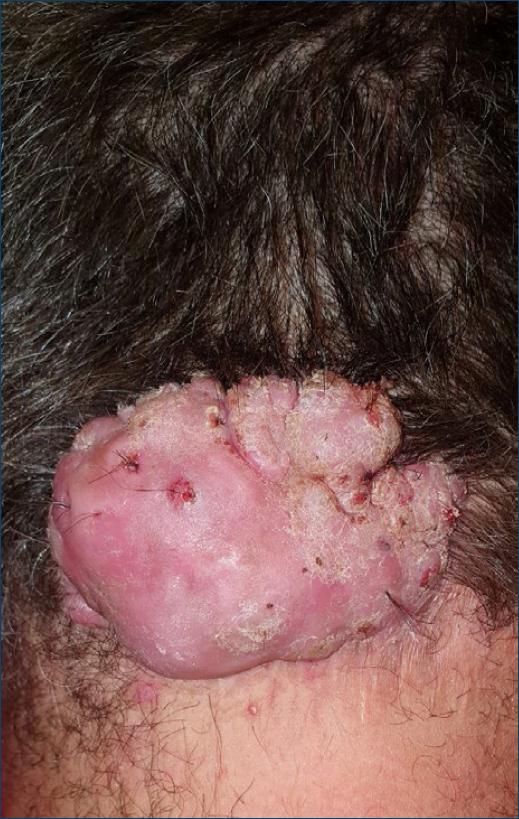A 43-year-old obese man (body mass index 31) with an uneventful past history presented with a large tumor in the occipital region. He reported the appearance 6 years before of papules and pustules that became larger and confluent, leading to multiple painful inflammatory draining nodules, later giving rise to a 10 cm-wide hairless keloid scar with some tufted hairs (i.e., multiple hair shafts emerging from a single follicular opening) at the periphery (Fig. 1). He denied previous fluctuant abscesses, but reported repeated local trauma due to helmet use as a firefighter.

Figure 1 Occipital keloid scar with tufted hairs at the periphery, surrounded by scarce papules and pustules.
The patient underwent several cycles of intralesional corticosteroid injections and electrosurgery, associated with oral tetracycline, with very modest results. He was later referred to plastic reconstructive surgery for wide surgical excision.
Folliculitis keloidalis is believed to be a rare mechanical chronic folliculitis of the nape region resulting in scarring alopecia1. Although it shows a predilection for postpubertal Afro-American man with black curly hair, which facilitates ingrowing hairs, it also affects other skin phototypes as in our patient. Also, other inciting agents may play an important role1, namely trauma (helmet use)2. Association with obesity as in our patient (BMI = 31) has also been occasionally observed3.
Early diagnosis is crucial to prevent this end-stage striking appearance and increase the likelihood of therapeutic response of this deemed refractory and disfiguring hair follicle disorder.














